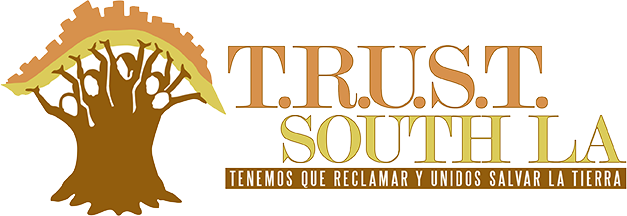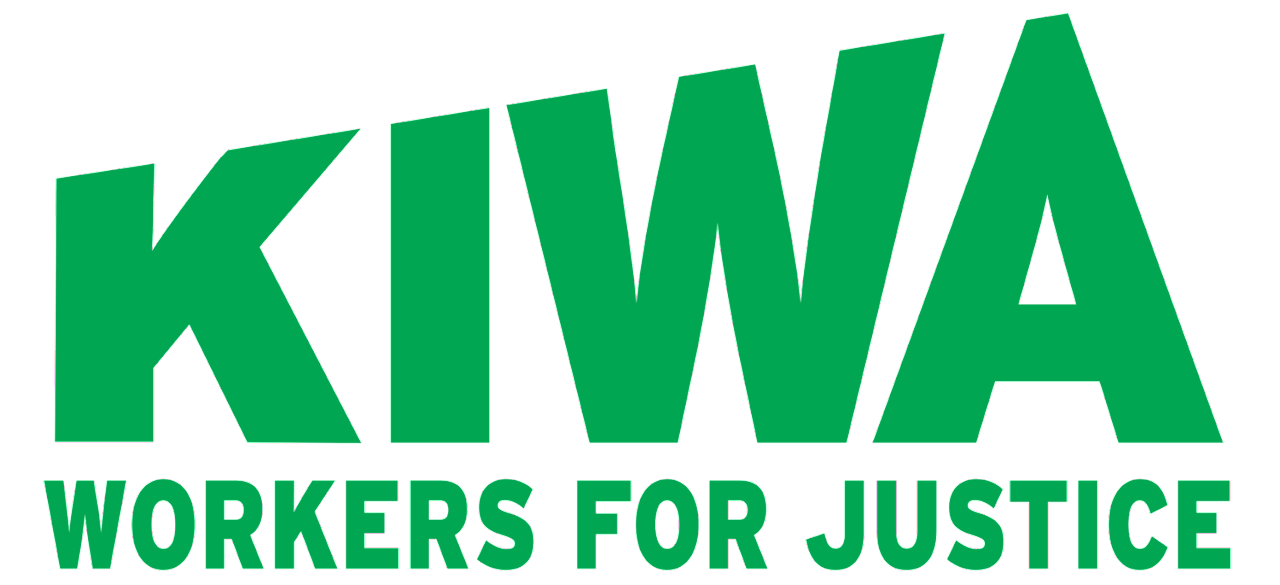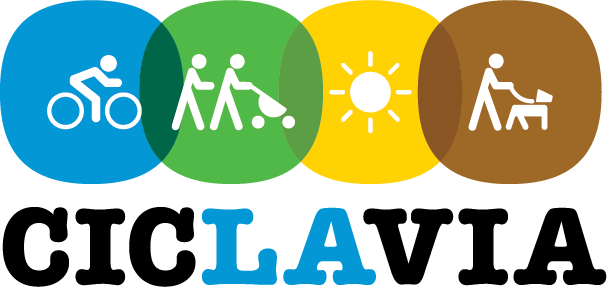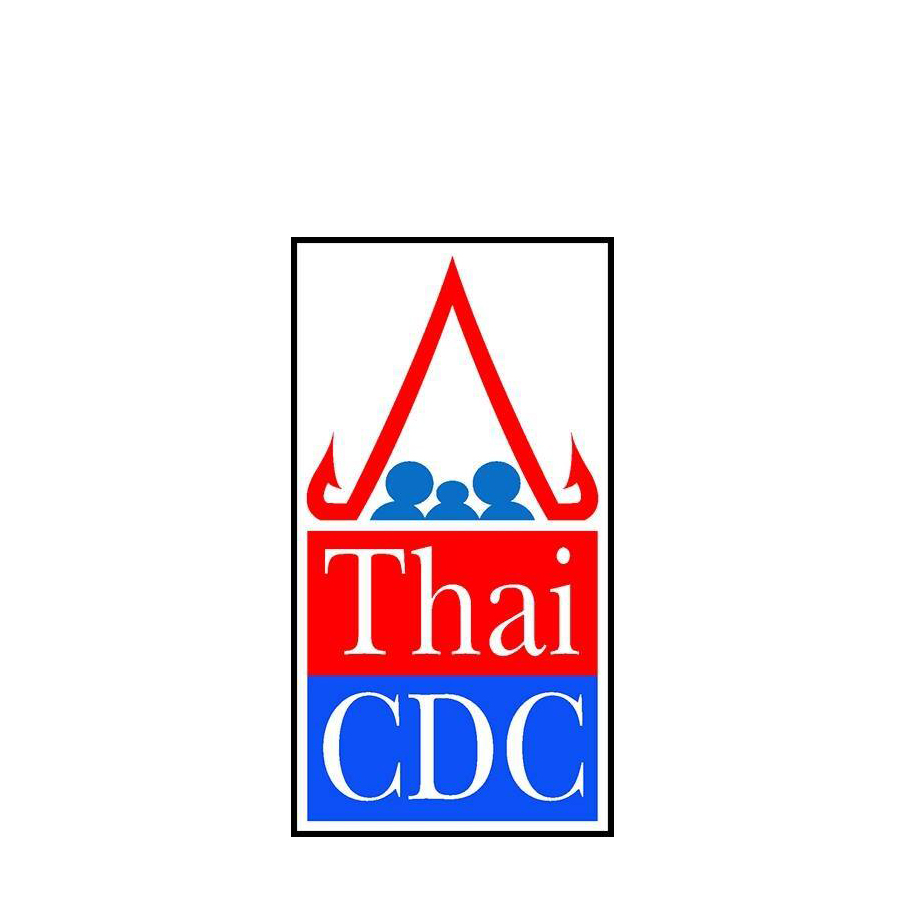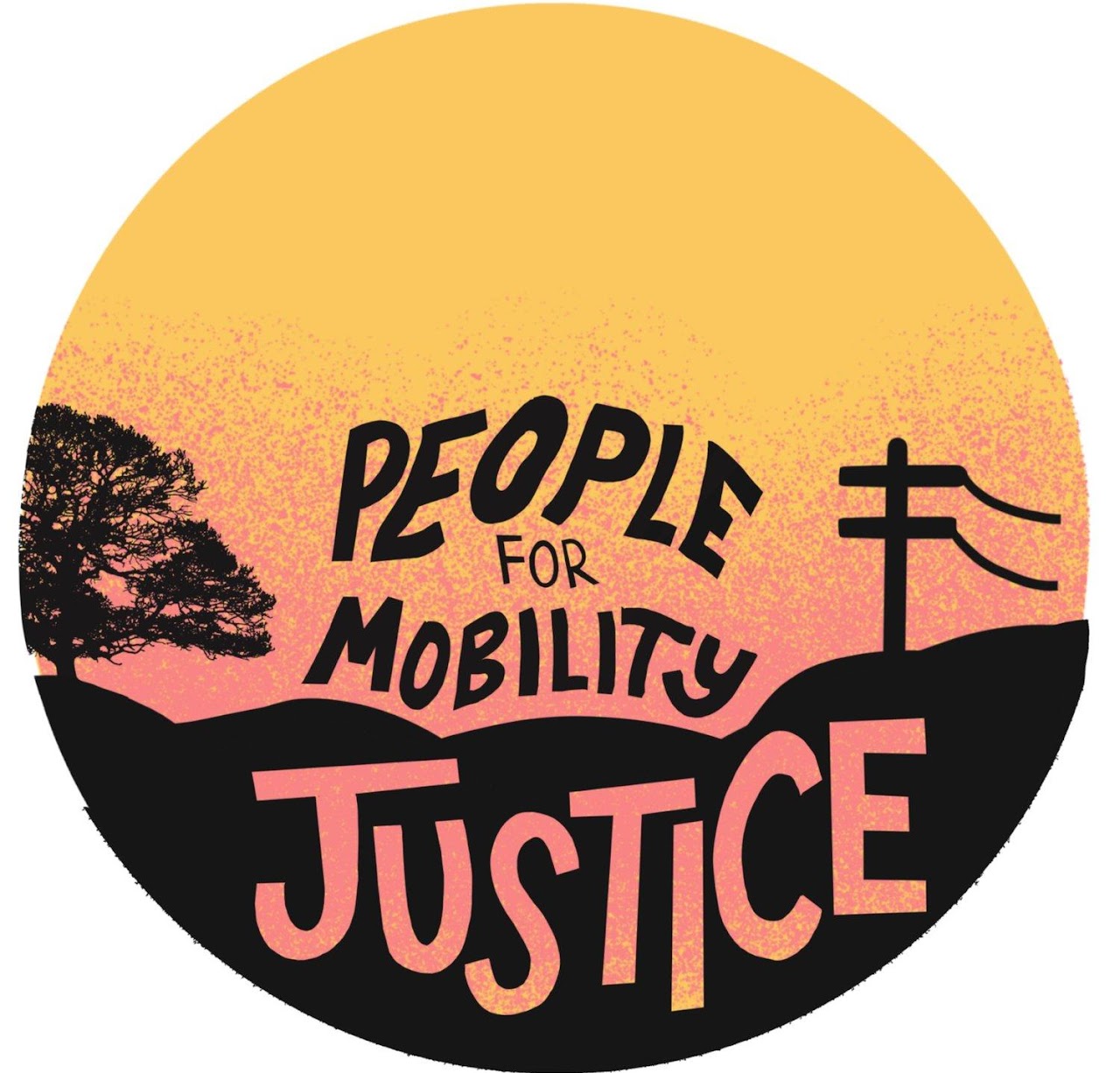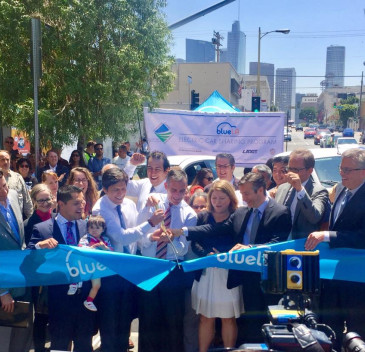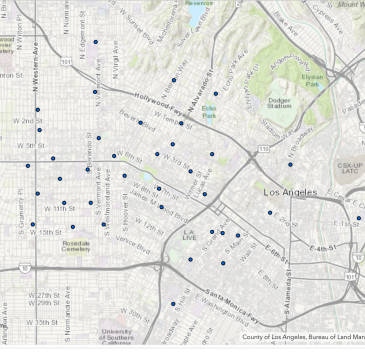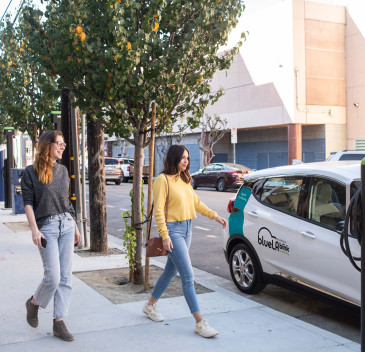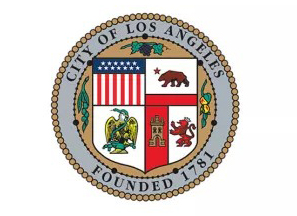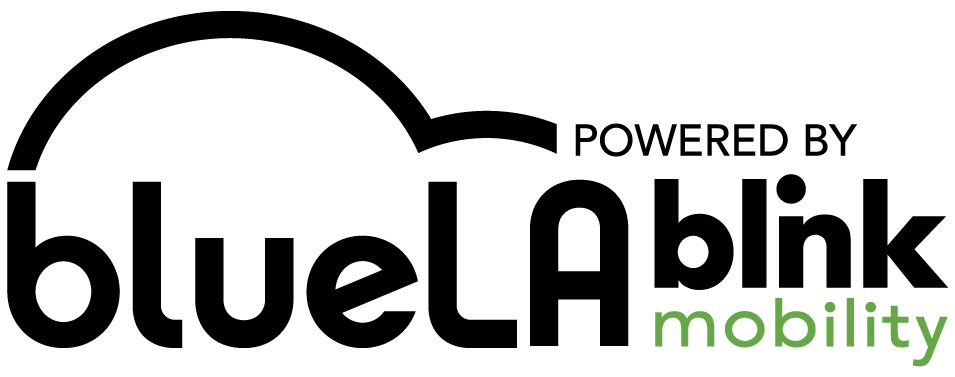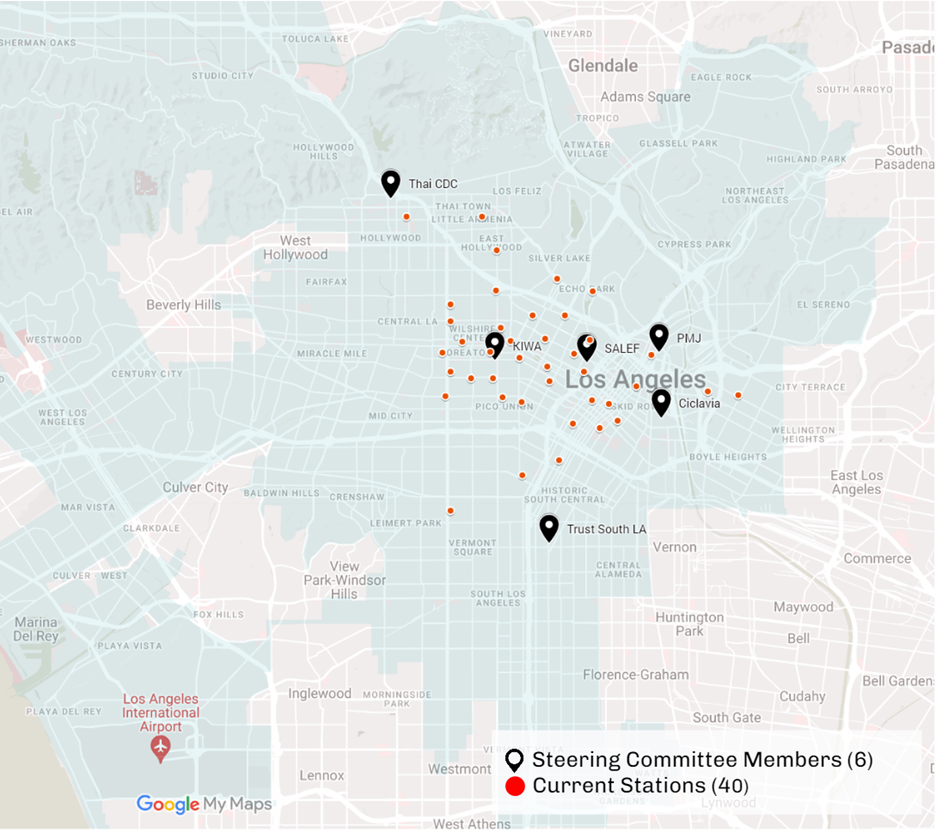BlueLA started in 2015 as a first-of-its-kind partnership between the Mayor’s Office, the Los Angeles Department of Transportation (LADOT), the Los Angeles Department of Water and Power (LADWP), and the California Air Resources Board (CARB). The program began service in 2018 with the goal of offering affordable and clean transportation alternatives to Los Angeles residents.
The BlueLA network is currently made up of 100 electric vehicles, which users can book for a few minutes or several hours. BlueLA Members can pick up and return a car at any of 40 designated on-street stations - with a total of 200 individual charge points - in Los Angeles. Rental rates start as low as $5/hour for income-qualified users.
BlueLA has received major investments from CARB's California Climate Investments (CCI) program, which uses cap and trade dollars, and LADWP, the nation’s largest municipal utility. LADOT has also attracted significant private sector interest and investment in this unique equity-focused EV Car share program. The BlueLA network is currently operated by Blink Mobility, which has extensive experience building EV charging stations around the world.
With 40 stations throughout the City of Los Angeles, BlueLA currently serves the communities of East Hollywood, Koreatown, Pico-Union, Downtown, Echo Park, Boyle Heights, Chinatown, and Westlake. The program also provides services to students by conveniently placing stations near Los Angeles Community College (LACC), Los Angeles Trade Technology College (LATTC), and the University of Southern California (USC).
Current BlueLA Stations
1. Become a member.
If you are 18 years of age or older and have a valid driver’s license, visit the BlueLA powered by Blink Mobility website to apply for membership. Be sure to check here to see if you qualify for the Community plan for low income residents.
2. Find a Vehicle near you.
Download and use the BlueLA powered by Blink Mobility app to identify cars available near you and select one for renting. Once you select the vehicle you will begin your pre-rental inspection and then be on your way! The BlueLA program features a fleet of brand-new Chevy Bolt Electric Vehicles, five door cars that seat five people and have a range of about 250 miles on a single charge.
3. Enjoy your trip!
Keep the vehicle for up to 12 hours and drive anywhere within Los Angeles County, Orange County, or Ventura County . When you are done, return to any designated BlueLA powered by Blink Mobility station and plug the vehicle in for charging.
Current BlueLA Stations and Steering Committee Organizations
The Steering Committee is composed of six local community-based organizations that lead community engagement and outreach efforts for the BlueLA program. The Committee includes the Koreatown Immigrant Workers Alliance (KIWA), the Salvadoran American Leadership and Education Fund (SALEF), TRUST South LA, People for Mobility Justice (PMJ), the Thai Community Development Center (Thai CDC) and Ciclavia.
These organizations are rooted in the communities they serve and have the experience, cultural competencies, and linguistic capabilities to effectively engage LA's most marginalized populations on the ground and ensure that their interests and needs are driving the BlueLA program forward. Through a variety of outreach activities and strategies, these organizations raise awareness about BlueLA and gather the community input needed to build a program that achieves mobility justice by facilitating access to affordable, greener, and quality transportation for underserved communities that need it the most. The Steering Committee is facilitated by Mobility Development Partners. This program was supported by the California Climate Investments program, putting cap and trade dollars to work.
